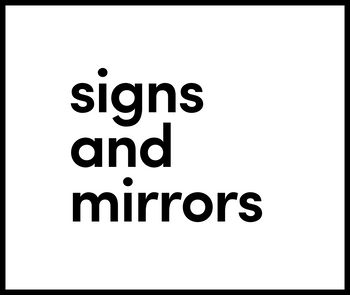Running a yoga studio means more than just teaching great classes. Attracting new students and building a loyal community takes consistent, intentional marketing. From local outreach to digital tools, the right strategies can help your studio grow in a way that aligns with your values and style.
What Actually Works in Yoga Studio Marketing (Beyond the Textbook)
Most marketing advice for yoga studios sounds the same: “start an Instagram,” “make a website,” “post more Reels.” These tools are fine but when everyone uses the same playbook, they stop making you stand out. Social feeds are crowded with identical poses and workshop flyers, and followers rarely convert into actual students.
In practice, what works is often quieter and more grounded. It’s the things that create real connection not just visibility.
For example:
- Being recognized as part of the local fabric, not just another wellness space.
- Creating peer support systems where long-time students help new ones feel at ease.
- Hosting low-pressure gatherings like early morning walks with breathwork or informal evening talks.
- Building a schedule based not on trends but on the actual energy of your classes noticing which ones bring people together and create momentum.
What works isn’t always scalable or slick. It’s responsive. It comes from paying attention, experimenting, and letting your studio be shaped by the people inside it. The strategies that follow are designed with that in mind not as templates, but as starting points to build something that feels real.
1. Start with the Street: Capture Foot Traffic First
Before diving into digital campaigns or collaborations, the most immediate opportunity for a yoga studio often starts right outside the door. Foot traffic is your first audience, the people already walking by, living nearby, and potentially looking for a space like yours. Yet many studios underuse this channel, relying on generic signage or none at all.
A well-designed sidewalk sign doesn’t just inform it invites. It can signal your brand’s tone, create curiosity, or simply catch the light in a way that makes people stop and look. This kind of visual interaction matters, especially in dense neighborhoods where first impressions happen fast. The right signage turns a passing glance into a visit and eventually, a loyal student.
At Signs and Mirrors, we know this firsthand. When we opened our own photo studio in New York, we couldn’t find a sign that matched our vision so we built one ourselves. That mirrored A-frame didn’t just look good; it became part of the customer experience. Since then, we’ve helped studios, retailers, and cultural spaces create sidewalk signs that do more than mark a location; they capture attention, reflect identity, and get photographed in the process.
Use Visual Signage That Gets Noticed
At Signs and Mirrors, we design signs to help businesses get seen. They’re not decorative extras, they're built to stop people in their tracks. Today, our products include a range of clean, durable signage made to stand out in high-foot-traffic environments.

1. Mirrored Rounded Stainless Steel A-Frame Sandwich Board Sign
004 - Mirrored Rounded Stainless Steel A-Frame Sandwich Board Sign is made from two sheets of stainless steel with a polished mirror finish and rounded top corners. It reflects light and movement, drawing attention naturally. Suitable for indoor and outdoor use in low to mid wind. Often used by studios, clinics, and retail stores looking for a clean, reflective street presence.

2. Stainless Steel Standing Sign
003 - Stainless Steel Standing Sign is cut from a solid sheet of 304 stainless steel. Both sides are polished for a clean metal finish. It’s a freestanding design built for stability in high-traffic areas. Used by studios, cafés, and shops that want a simple, sturdy sign with a modern look.

3. Acrylic A-Frame Sidewalk Sign
#010 - Acrylic A-Frame Sidewalk Sign is made from high-gloss acrylic. It’s lightweight, easy to move, and works well in calm outdoor or indoor settings. Commonly used at events, storefronts, and wellness studios where mobility and visual contrast are important.
2. Tie Your Studio to a Specific Lifestyle Identity
Studios that try to appeal to everyone tend to blend into the background. A clearer path to visibility is to align your studio with a specific lifestyle or mindset that your audience already relates to. This doesn’t mean excluding people, it means being more recognizable to the right ones.
That identity could be built around slow living, minimalism, body neutrality, creative expression, or recovery-focused wellness. For example, a studio might lean into quiet spaces, neutral tones, and low-sensory classes for clients seeking calm. Another might center around movement for new parents, outdoor-focused routines, or mental health support.
This kind of positioning affects more than just your Instagram feed. It shapes your space, class names, partnerships, signage, and the way people talk about your studio when they recommend it. When your studio reflects how your clients already live or how they want to, it stops being just a place to take classes and becomes part of their routine.
3. Develop Your Own Teaching Language or Framework
Creating a recognizable structure within your classes makes your studio more memorable and harder to copy. When students can name and refer to your methods even casually they’re more likely to return, talk about it, and stay loyal over time.
Name Your Sequences or Formats
Instead of offering just "vinyasa" or "restorative," create your own class names that reflect structure or intent - like Rise Flow, Reset, or Core + Stillness. These names don’t just brand the class; they help students understand what to expect and remember what they liked.
Introduce Repeatable Elements
Use consistent openings, closings, or cue styles that feel familiar across instructors. It gives students a sense of rhythm and comfort, even as teachers or playlists change. Over time, that consistency becomes part of your studio’s identity.
Make It Visual or Tangible
Consider simple printed guides, wall graphics, or take-home cards that explain your framework. A visual reference helps new clients get oriented quickly and gives your studio a more defined feel especially helpful when expanding to multiple instructors or locations.
Creating a teaching system doesn’t have to be complicated. It just needs to be clear, repeatable, and reflective of how you want students to move and feel.
4. Create a “Yoga Mentor” Program
New students often feel out of place during their first few visits especially if the studio culture is tight-knit or classes move quickly. A simple way to make your space more welcoming is to introduce a low-pressure peer support system.
A yoga mentor program pairs newer students with more experienced regulars. It’s informal, easy to run, and can improve both retention and community feel.
Here’s how to structure it:
- Invite long-time students to volunteer as mentors, no teaching required, just basic guidance and support before or after class.
- Match mentors with new members during their first week or trial period. A short intro and check-in is usually enough.
- Offer basic prompts to get things started, like showing where props are, explaining class types, or sharing tips for beginners.
- Mention the program during onboarding and include a visual sign or opt-in at the front desk.
- Keep it optional and casual not everyone wants a buddy, but those who do will remember the gesture.
Studios that feel socially warm tend to grow through word of mouth. This type of micro-interaction builds that warmth without adding pressure to instructors or staff.
5. Build a Modular Class Format for Hybrid Use
Instead of trying to livestream full-length classes or upload polished hour-long videos, break your teaching into short, reusable segments that can be offered both in-studio and online. Modular formats are easier to produce, easier to access, and more flexible for students.
Here’s how it works:
- Record standalone segments like 5-minute breathwork, 10-minute warm-ups, or 15-minute targeted flows. These can be mixed and matched depending on a student’s needs or time.
- Use the same structure in studio classes, so regular students recognize the format. That consistency helps them follow along at home and makes your virtual content feel familiar.
- Package modules into themes, such as "Sleep Reset," "Post-Desk Movement," or "Beginner Core Starter." These collections can be sent out as email sequences, offered as subscriber perks, or included in a basic app or portal.
This approach doesn’t require a studio full of equipment or weekly editing. It’s designed for studios that want to offer online value without replicating the entire in-person experience. Over time, it also builds a library of material you can reuse, repurpose, and expand.
6. Track Studio Energy, Not Just Attendance
Numbers can tell you who showed up, but they won’t tell you how a class felt. Not all full classes are strong, and not all small classes are weak. Paying attention to the energy in the room helps you understand what’s actually working beyond the spreadsheet.
Start by observing what happens before and after class. Are people showing up early and chatting, or slipping in and out quietly? Do students stay after class or linger in the hallway? Are there certain teachers or time slots that consistently generate more interaction, calm, or visible satisfaction?
This kind of soft data is easy to miss but valuable over time. It can guide decisions on your schedule, class types, or staffing. For example, a class with moderate attendance but high engagement might deserve more promotion, while a packed class that feels flat may need a format adjustment. Watching the tone of the space helps you build a studio that feels alive, not just occupied.
7. Track Studio Energy, Not Just Attendance
Attendance numbers show who came. Energy shows who connected. While most studios track sign-ins and class counts, it’s just as important to notice how a class feels, how students interact, how the room moves, and what lingers after.
Pay attention to signs like:
- Do people arrive early or rush in last-minute?
- Are students talking to each other before or after class?
- Does the room feel focused, distracted, quiet, energized?
- Which instructors naturally build that atmosphere?
Some classes may be small but deeply engaged. Others may be full but disconnected. Over time, these patterns can shape how you schedule, promote, or adjust your offerings. A class that consistently creates strong energy might deserve more visibility even if the numbers aren’t the highest.
Studio culture isn’t built by headcount alone. Tracking energy helps you design a space that people actually want to return to.
8. Offer Non-Class Touchpoints
Some of the most valuable interactions in a yoga studio happen outside of class. Creating informal ways for students to engage with the space, the staff, or each other helps build a stronger sense of connection and belonging. These touchpoints don’t require complex planning, just consistent, low-effort opportunities for presence.
This might look like morning tea and journaling sessions, quiet open hours for stretching, or short monthly check-ins with an instructor. Even a casual invitation to stay and chat after class can shift the tone of the space. The goal isn’t to add more programming, it's to make the studio feel open and responsive beyond the scheduled practice.
When students feel part of something, they’re more likely to return, recommend, and stay engaged. Non-class moments help make that possible.
9. Run Values-Based Campaigns (Not Just Discounts)
Marketing doesn’t always need to revolve around price. Campaigns rooted in values or themes tend to resonate more deeply and build stronger long-term connections. Instead of running another “first class free” promo, consider framing your outreach around ideas that align with your studio’s identity.
Build Campaigns Around Experiences, Not Offers
Focus on what people want to feel or achieve, not just what they’ll save. A week of classes framed around “Better Sleep,” “Movement for Anxiety,” or “Reset After Burnout” gives people a reason to engage beyond cost.
Use Real-World Context
Tie your messaging to moments that matter: the change of seasons, mental health awareness months, or the post-holiday slump. People respond to timing that feels relevant to their lives.
Create a Theme That Carries Across Channels
Once you’ve chosen a focus, keep the tone and visuals consistent across your website, social media, email, and in-studio signage. It doesn’t need to be complicated, just clear, recognizable, and honest.
Values-based campaigns make your studio feel intentional and thoughtful. They attract students who are looking for more than just a class they’re looking for alignment.
10. Build a Micro-Community, Not Just a Follower Base
Having a large audience online doesn’t always translate to real connection. Many yoga studios focus on growing their social media numbers, but the deeper value often comes from smaller, more engaged groups. These are the people who show up, stay involved, and refer others not because of ads, but because they feel part of something.
Focus on building a micro-community you can actually interact with. That might mean a private group chat for members, a regular check-in circle, or a small event series open only to existing students. These spaces create room for conversation, feedback, and mutual support. They’re also where people start forming habits around your studio, not just visiting it once.
A strong micro-community is easier to sustain and far more likely to grow through word of mouth. It’s not about reach, it's about relationships.
11. Partner with Non-Wellness Businesses
Not every meaningful collaboration comes from within the wellness world. Partnering with non-wellness businesses can introduce your studio to new audiences and help you stand out in a crowded market. Think bookstores, florists, cafés, galleries, or clothing shops spaces that attract people who may also be looking for balance, routine, or creative time.
These partnerships can take many forms: a pop-up class in a local shop, shared window displays, a cross-promotion flyer at the counter, or a quiet event series hosted after hours. The goal is to connect with potential students in places they already visit without competing for attention in the usual wellness spaces.
Working with unexpected partners can also sharpen your studio’s identity. It signals that your brand is part of a larger lifestyle, not limited to just yoga or fitness. That kind of positioning helps your studio stay memorable and grow in a more organic, grounded way.
Conclusion
Marketing a yoga studio today goes far beyond ads and social media. It’s about building a space that feels intentional, recognizable, and connected to the people who walk through the door and the ones who haven’t yet. The most effective strategies focus on clarity, relevance, and consistency. Whether it’s a mirrored sidewalk sign, a small mentoring system, or a values-driven campaign, the details matter.
Not every idea will fit every studio. But the right few done well and repeated can shift how your studio is seen, talked about, and remembered. Start small, stay honest, and focus on what actually builds trust and community. That’s the kind of marketing that lasts.
FAQ
How can I attract more walk-in clients to my yoga studio?
Start with your physical presence. A well-designed sidewalk sign placed outside your studio is one of the most effective tools for drawing attention from foot traffic. Clear signage, visible class info, and a clean storefront make a big difference.
Do I need to be active on every social media platform?
No. Focus on one or two platforms where your target audience is most active. Prioritize consistent, meaningful posts over trying to be everywhere at once.
What kind of promotions work best for yoga studios?
Promotions tied to values or outcomes like a week of classes for stress relief often perform better than generic discounts. They connect with what people are actually looking for, not just what’s cheaper.
How do I make new students feel more comfortable?
Implement small support systems, like a yoga mentor program or informal check-ins. These personal touches reduce the intimidation factor and help new students settle in faster.
Can I build a community without offering lots of events?
Absolutely. Even small touchpoints like group chats, feedback circles, or stay-and-talk moments after class help build community. You don’t need to overprogram; you need to be consistent.




